How to land your dream job in video games
Leading artists share some top tips and tricks for breaking into the game art industry.

Grant Duncan once spent a whole week drawing rubbish bins – nothing but rubbish bins. He's now sole artist at the British developer behind space-explorer No Man's Sky, a video game so expansive it would take players some five billion years to visit each planet in its universe.
There was a lot of legwork in between. A creative visualisation student at Teesside University, UK, Grant signed with a string of agencies after graduating, eventually landing a job as a character artist for Warhammer Online.
"I was very lucky," he says. "I got the job and my sordid love affair with game art has been going ever since. I can only assume the lead artist took pity on me, because my portfolio was far from outstanding.

"If I could give advice to my younger self, then it would be to finish more – so much of my portfolio was half-finished pieces. I see a lot of portfolios now, and nothing really beats a good, finished, polished piece of art. It shows that you're capable of sticking with something, and that you have a good eye for detail."
A good eye for detail has proved essential in Grant's work for Hello Games. The Guildford-based developer is set to release No Man's Sky, initially on PlayStation 4, this year. Procedurally generated (content created algorithmically by a host computer, as opposed to prepackaged artwork), the game will feature over 18 quintillion (yes, that's a real number) different worlds.
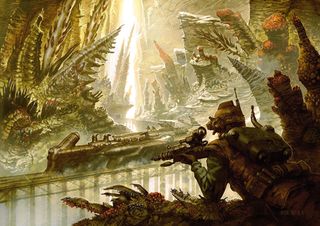
Playing god
It's a far cry from rubbish bins. Working on a project of such scope and scale reminds Grant why he got into games in the first place. He encourages all fledgling artists to invent their own worlds and the creatures within them. To create backstories, narratives. To "play God."
"I'm a firm believer in game artists being game artists. But don't just sit back and create assets: get involved in conversations with coders and designers. It'll give you an understanding and respect for the different roles. The lines have never been more blurred between disciplines. There's no reason for an artist to feel they can't make their own game: the tools are out there."
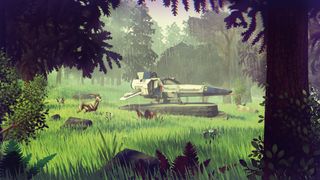
Grant has tips for breaking into the industry. Join online communities – he prefers Polycount. Show your work as soon and often as you can: critique is essential. Surround yourself with artists you admire – if not in person, then virtually.
Approach those you like, but don't pester them. Create a simple, easy-to-navigate portfolio. Keep it separate from your blog: art directors need to see your best work quickly and easily.
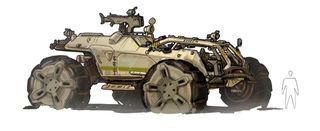
"What I know now that I didn't fully understand back when I was younger," Pacific Rim artist Hugo Martin says, "is that it's not about talent. It's all about the mileage." Hugo is a concept artist with over 10 years' experience in the games industry – most recently at id Software, the Dallas-based development company behind Doom, Quake and Rage.
Hugo's big break came through hard work, persistence and patience – the mileage. He didn't hear anything for months after sending his portfolio to Wizards of the Coast, the company that offered him his first paid gig.
Good impressions
The medium may have changed, but the principles remain the same. Hugo says artists should carry portable devices to show art directors and potential clients their portfolio. Visit events artists attend – cons or expos, for example. Try and put your work in front of as many people as you possibly can.
"Approach anyone and everyone who's a working artist at these events," Hugo says. "You never know who you're talking to or who they may know. There's always a chance you'll make a good impression and that could lead to something. You have to be ready with your business cards to hand out. Being a good communicator is important. Being polite and humble never hurts."
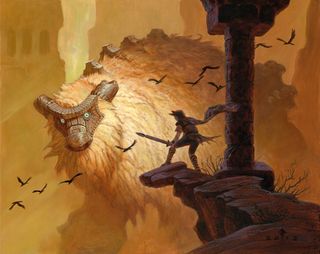
On a practical level, Hugo stresses the importance of mastering anatomy: "Get Andrew Loomis' book, Creative Illustration, lock yourself in a room with it and don't come out until you've memorised every page of it." While he sees creating your own game as a good exercise – "just to scratch that creative itch" – he says time is more wisely spent working on an existing story.
"Use an IP that's already out there as the basis for your portfolio projects. It's easier that way and you'll learn more about what it's like to be a real working artist in the games industry. Nine times out of 10, in this business, you'll be working on an existing IP. So it pays to practise."
Weta artist Greg Broadmore can see both sides of this debate. He recently took his own creation to an established developer to realise his dream of directing his own game. For over a decade Greg's worked at film special effects and prop company Weta Workshop. But his heart, he says, is and always has been in video games.
Creative concessions
Magic Leap is the developer helping bring Lord Cockswain to life and it's a dream come true. But the Kiwi says once clients, directors and producers get involved, you may well have to make concessions in your creativity. These are the rules of the game for those looking to break into a competitive industry.
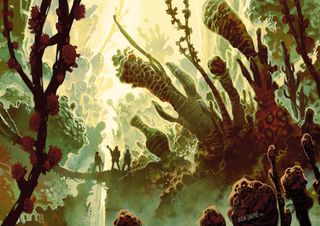
"It's impossible not to imagine creating your own game if you're a creative person," Greg says. "These ideas just spring up. They should be followed wherever they lead.
"But games are colossal exercises in creative problem solving, and that's a collaborative thing. You need to revel in collaborative creativity. Even if the direction is not your own, anything you create is guided through your hand."
This article originally appeared in ImagineFX magazine issue 115.
Like this? Read these!
- Jupiter Ascending artist on creating futuristic art
- 10 digital art events you shouldn't miss in 2015
- Paralysed artist creates incredible work using only his eyes

Thank you for reading 5 articles this month* Join now for unlimited access
Enjoy your first month for just £1 / $1 / €1
*Read 5 free articles per month without a subscription

Join now for unlimited access
Try first month for just £1 / $1 / €1
Get the Creative Bloq Newsletter
Daily design news, reviews, how-tos and more, as picked by the editors.

Beren has worked on creative titles at Future Publishing for over 13 years. Cutting his teeth as Staff Writer on the digital art magazine ImagineFX, he moved on to edit several creative titles, and is currently the Ecommerce Editor on the most effective creative website in the world. When he's not testing and reviewing the best ergonomic office chairs, phones, laptops, TVs, monitors and various types of storage, he can be found finding and comparing the best deals on the tech that creatives value the most.